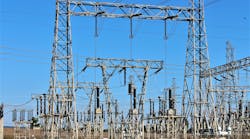The utilities industry has undergone a massive transformation since its inception, which has been more rapid in the last decade. There is a constant pressure to explore new and more efficient ways for a secure, reliable and affordable supply, cut costs, increase production capacities and maintain and increase revenue when both infrastructure and workforce are aging and costly to replace. Constant changes in the industry standards and regulations have brought about a sea change in the way utilities run their business and operations. Newer technologies are being pursued to combat climate change, reduce carbon emissions and to ‘go green’ as citizens demand energy and water that don't undermine environmental quality accompanied by a collapse in market valuations.
The utilities industry is still largely regulated, both internally and externally, and the revenue generation is consumer mass oriented subjected to price ceilings, quality objectives and is predicated on regulatory approval. The gradual privatization and deregulation of the industry has forced the utilities to look for revenue opportunities beyond service provision and base rates in the face of increasing competition. In terms of operations, utilities are moving towards process-centric business that requires interoperability both internally and externally. In such a scenario, the only way revenue can be maintained and increased is by embracing sustainability and driving bottom-line savings.
Utilities face many challenges with their business and operations. In a highly asset intensive industry with a geographically disparate asset base, implementing operational and maintenance standards and practices is necessary to continually improve the balance between asset reliability and costs. They require uninterrupted supply of adequate and cost-effective materials as well as maintenance equipment in order to ensure continuity of operations, reduced downtime and improved supply management.
Inventory management is another challenge with poor visibility into the inventory assets leading to low cross-facility material utilization and a decrease in the return on capital employed. Untimely equipment failures in utilities lead to unplanned plant downtime and lost revenues. With the companies depending on numerous suppliers for their operations and services, it is important for supply management to go beyond the company to the extended workforce. The constantly evolving environmental standards and regulations issued by governments have to be strictly adhered to, failing which there could be monetary penalties....

